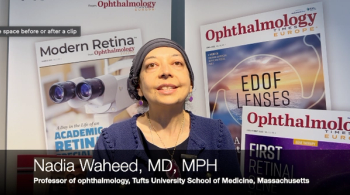
- Ophthalmology Times: July/August 2025
- Volume 50
- Issue 4
The emerging era of presbyopia-correcting eye drops: What’s next?
Key Takeaways
- New presbyopia-correcting eye drops, including VIZZ and Qlosi, offer alternatives to Vuity, with more options under FDA review.
- Efficacy is measured by improvements in near vision, with new drops showing promising results in clinical trials.
Advances address a need for the growing populace with age-related near vision loss.
Since 2021, only 1 prescription eye drop for the correction of presbyopia, pilocarpine HCI ophthalmic solution 1.25% (Vuity; AbbVie), has been available, with additional options expected soon. In early 2025, a second eye drop, pilocarpine HCI ophthalmic solution 0.4% (Qlosi; Orasis Pharmaceuticals), was commercially launched. On July 31, 2025, LENZ Therapeutics, Inc. announced the FDA approval of VIZZ (aceclidine ophthalmic solution 1.44%), the first and only FDA-approved aceclidine-based eye drop for the treatment of presbyopia in adults.
In addition, the FDA is reviewing an application for the approval of a fixed combination of carbachol 2.75% and brimonidine tartrate 0.1% (Brimochol PF; Tenpoint Therapeutics), with a decision expected in January 2026. Next in the pipeline is phentolamine 0.75% (MR-141/Nyxol; Opus Genetics/formerly Ocuphire), which recently reported top-line results from a second phase 3 trial (Table).
How will these new entrants to the market change the landscape? There remains strong interest in the category of presbyopia-correcting eye drops due to the appealing potential for patients to reduce their dependence on spectacles. Loss of near vision was ranked No. 1 among age-related health ailments that affect quality of life, ahead of hearing loss, arthritis, high blood pressure or cholesterol, and dry eyes.1 What our patients are looking for is an eye drop that, with 1 instillation, can provide a full workday of functional near vision.
Active Ingredient
Dosing
Perservative
Approval Status
Vuity (AbbVie)
Pilocarpine 1.25%
Once or twice daily, with second dose after 3 to 6 hours
Benzalkonium chloride (BAK)
Approved
Qlosi (Orasis Pharmaceuticals)
Pilocarpine 0.4%
Once or twice daily, with second drop suggested after 2 to 3 hours
Preservative-free
Approved
VIZZ (LENZ Therapeutics)
Aceclidine 1.44%
Once daily
Preservative-free
Approvedn July 31, 2025
Brimochol PF (Tenpoint Therapeutics)
Carbachol 2.75% and brimonidine tartrate 0.1% (fixed combination)
Once daily
Preservative-free
FDA decision in January 2026
MR-141/Nyxol (Opus Genetics/Viatris)
Phentolamine 0.75%
Once daily
Preservative-free
Phase 3 trials completed; data not yet submitted to FDA
Drug differences
Pilocarpine 0.4% has a lower concentration of the active ingredient (0.4% vs 1.25% pilocarpine), which may help to alleviate the dimming effects that patients may have reported with the higher concentration. Pilocarpine 0.4% is intended to be dosed up to twice daily for most people, with patients recommended to instill the second drop 2 to 3 hours after the first. Although we have each prescribed it to a few patients, it is too early to know yet whether they will be satisfied with the twice-daily instillation and duration of effect.
The newly approved aceclidine 1.44% drop and the fixed-combination carbachol 2.75% and brimonidine tartrate 0.1% product under FDA consideration rely on different miotic agents that promise a longer duration of action and potentially less backward movement of the lens. Aceclidine 1.44% is a novel miotic that has not previously been approved in the US, although it is used to treat glaucoma in Europe. Carbachol 2.75% and brimonidine tartrate 0.1% will be the first and only combination product, providing a dual mechanism of action. Including brimonidine tartrate in the formulation appears to increase the bioavailability of carbachol by altering aqueous dynamics, prolonging the pinhole effect and contributing to a longer duration of action.2 All the new entrants to the market will be free of preservatives, which can help to maintain a healthy ocular surface.
Efficacy
All the FDA studies leading to the approval of presbyopia-correcting eye drops must demonstrate that the percentage of patients using the study drug who achieve a greater than or equal to 15-letter (3-line) improvement in binocular near vision, without losing greater than or equal to 5 letters (1 line) of distance vision, is statistically significantly higher than the percentage of patients using the vehicle comparator.
That’s a somewhat arbitrary line—a patient who reads 15 more letters meets the standard for being a “responder,” whereas one who reads 14 letters does not, even though both patients might subjectively view their experience as similarly positive. For that reason, it is also important to monitor reports of the percentage of eyes achieving at least a 2-line gain in near vision, or who have functional near vision of at least 20/40.
When the 2-dose regimen of pilocarpine 0.4% was evaluated as a twice-daily drop over a 2-week period, 40% achieved the FDA endpoint of a 3-line gain on day 8 at 1 hour post dose compared with 19% of the vehicle group, with similar results out to 4 hours.3 Among those who could not achieve 20/40 near at baseline, approximately 80% had functional (20/40) near vision on day 15, with efficacy out to 8 hours. Full results of its phase 3 trials have been published.3
LENZ Therapeutics has reported that 71%, 71%, and 40% of participants in its CLARITY phase 3 (NCT05656027, NCT05728944, NCT05753189) clinical trials achieved the FDA endpoint at 0.5 hours, 3, and 10 hours on day 1, with higher percentages achieving 2-line gains.4 Vehicle comparison data have not been shared. The drug was studied out to 6 months.
The fixed combination agent of carbachol 2.75% and brimonidine tartrate 0.1% successfully met its clinical trial end points, and the company reports that approximately 85% of subjects had functional near vision of 20/40 or better at 1 hour, with approximately 50% still 20/40 or better at 10 hours. The combination demonstrated an increase in peak effect and duration over carbachol alone.2 The pupil constricts within 30 minutes and then gradually returns to normal throughout the day, with no tachyphylaxis in pupil response or near vision over the 12-month study, the longest conducted so far. To date, Tenpoint Therapeutics is believed to be the only company to have measured reading speed using a validated scale in its clinical trials, reporting a 39% improvement. This reflects functional gains, not just improvements in visual acuity.
Safety and tolerability
For elective, out-of-pocket treatments like presbyopia-correcting eye drops, adverse effects are an important consideration. Patients may be discouraged from using an eye drop if it causes stinging, eye redness, or headaches. The good news is that most of the new presbyopia-correcting agents seem to have favorable adverse effect profiles, with most headaches, for example, presenting as mild and transient. As observed with pilocarpine 1.25%, patients may benefit from encouragement to continue through the initial adjustment period, with reassurance that although adverse effects such as headaches typically diminish over time, improvements in near vision are expected to persist.
The combination of a miotic and an agent with known eye-whitening properties may be an important factor for carbachol 2.75% and brimonidine tartrate 0.1% in reducing the potential adverse effect of ocular redness. We know that brimonidine tartrate, which is approved for use at a 0.025% concentration for relief of ocular redness (Lumify; Bausch + Lomb), has provided effective eye whitening.
A bigger concern for many clinicians is whether presbyopia-correcting eye drops might cause or contribute to retinal detachment (RD). To our knowledge, there have not been any cases of RD in any of the clinical trials for presbyopia-correcting eye drops, although there were a few following the approval of pilocarpine 1.25%. An important lesson from that early experience is that patients should have a dilated fundus exam before being prescribed a presbyopia-correcting agent, and that patients with higher myopia with an elevated risk of RD should avoid this treatment.
It has also been encouraging to see that, in its studies, carbachol 2.75% and brimonidine tartrate 0.1% had a low rate of vitreous detachment, similar to vehicle, which suggests that it may be less likely to contribute to an RD, consistent with what was previously known about its active ingredients.5 Pilocarpine 0.4% also had a low rate of vitreous detachments (1 each in the study and vehicle groups).3
Future expectations
We still have much to learn about these drops, individually and comparatively. For example, the impact on pupil size is the only objective way to measure the drugs’ effects. The optimal pupil size for presbyopia correction has not yet been clearly established. If the pupil is too small, it may not allow sufficient light for good vision in varying lighting conditions; if it’s too large, the drop may not achieve the pinhole effect needed to enhance depth of focus. We are looking forward to seeing which medications get the balance just right. It will also be interesting to see whether the pupil’s dynamic nature (constricting with near effort) is retained with these agents.
As we begin to prescribe new presbyopia-correcting eye drops, it is also important to set realistic expectations and to start with patients who have the highest likelihood of success, including patients with emmetropic presbyopia who have never worn vision correction, those with pseudophakia and emmetropia (or near emmetropia) who are seeking improved near vision, and those who currently wear contact lenses but cannot or choose not to use multifocal options.
Clinicians are encouraged to review the latest presbyopia-correcting drops entering the market, as patient interest in these treatments continues to grow.
Cathleen McCabe, MD
McCabe is the chief medical officer at Eye Health America and the medical director at The Eye Associates in Bradenton, Florida. She also serves as a strategic medical advisor for Bausch + Lomb, consults for AbbVie and Tenpoint Therapeutics, and has received research support from Allergan and Orasis Pharmaceuticals.
Eric E. Schmidt, OD
Schmidt is president of Omni Eye Specialists in Wilmington, North Carolina, and assistant chief medical officer for Keplr Vision. He is a consultant for Allergan, LENZ Therapeutics, Orasis Pharmaceuticals, and Tenpoint Therapeutics.
References
Donnenfeld ED. Clinical considerations for topical presbyopia drop therapies. Presented at: International Society of Presbyopia Conference 2020; November 11, 2020; Virtual.
Verhoeven RS, Burke, J, Schiffman, R. Nonclinical pharmacokinetics and pharmacodynamics of Brimochol, a combination product for the treatment of presbyopia. Presented at: Association for Research in Vision and Ophthalmology 2022 Annual Meeting; May 1-4, 2022; Denver, CO. https://iovs.arvojournals.org/article.aspx?articleid=2780074
Holland E, Karpecki P, Fingeret M, et al. Efficacy and safety of CSF-1 (0.4% pilocarpine hydrochloride) in presbyopia: pooled results of the NEAR phase 3 randomized, clinical trials. Clin Ther. 2024;46(2):104-113. doi:10.1016/j.clinthera.2023.12.005
LENZ Therapeutics announces positive topline data from phase 3 CLARITY presbyopia trials. News release. LENZ Therapeutics. April 3, 2024. Accessed June 27, 2025. https://ir.lenz-tx.com/news-events/press-releases/detail/11/lenz-therapeutics-announces-positive-topline-data-from-phase-3-clarity-presbyopia-trials
Kubo C, Suzuki R. Involvement of prejunctional alpha 2-adrenoceptor in bovine ciliary muscle movement. J Ocul Pharmacol. 1992;8(3):225-231. doi:10.1089/jop.1992.8.225
Articles in this issue
about 1 month ago
New insights show “later is better” for some LHON interventionsabout 1 month ago
The future of imaging is out of this worldabout 1 month ago
Glaucoma techniques advance with innovative viscoelastic deliveryabout 1 month ago
Surgical innovation in dry eye disease: Salivary gland transplantabout 1 month ago
Post-LASIK presbyopia: Meeting expectations with evolving technologyabout 1 month ago
Next-generation IOLs advance complex cataract careabout 1 month ago
Under-eye filler: Cannula vs needle in tear trough treatmentabout 1 month ago
Reflex for stabilizing vision develops without sensory inputNewsletter
Don’t miss out—get Ophthalmology Times updates on the latest clinical advancements and expert interviews, straight to your inbox.


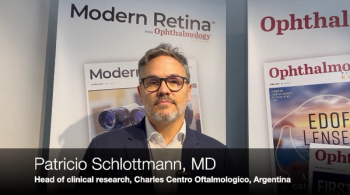
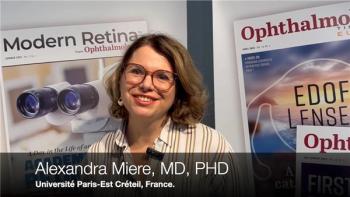
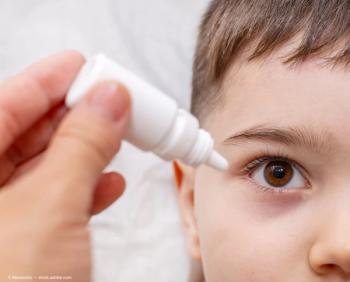
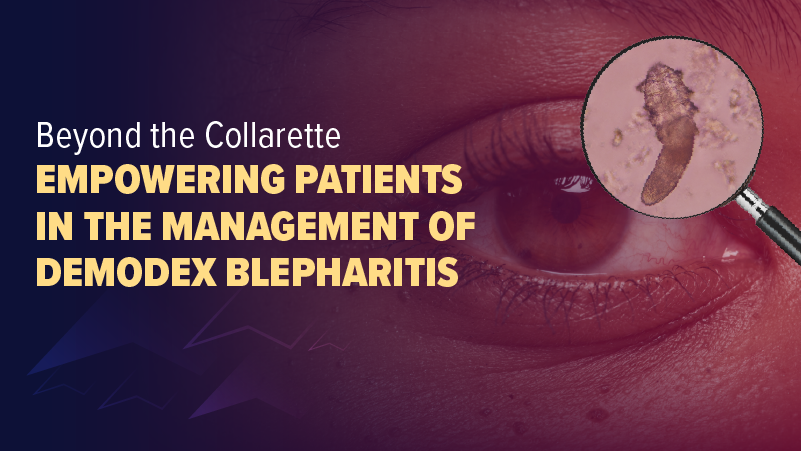


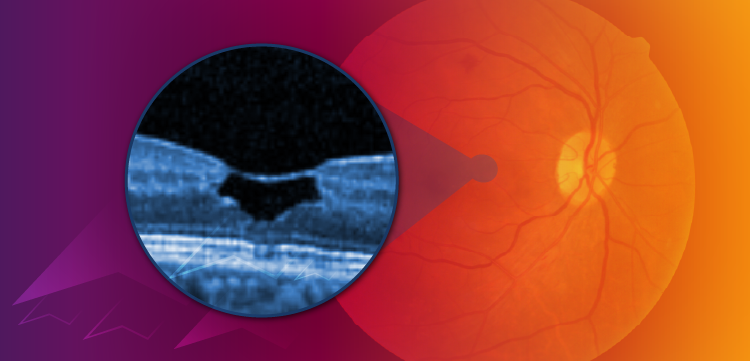

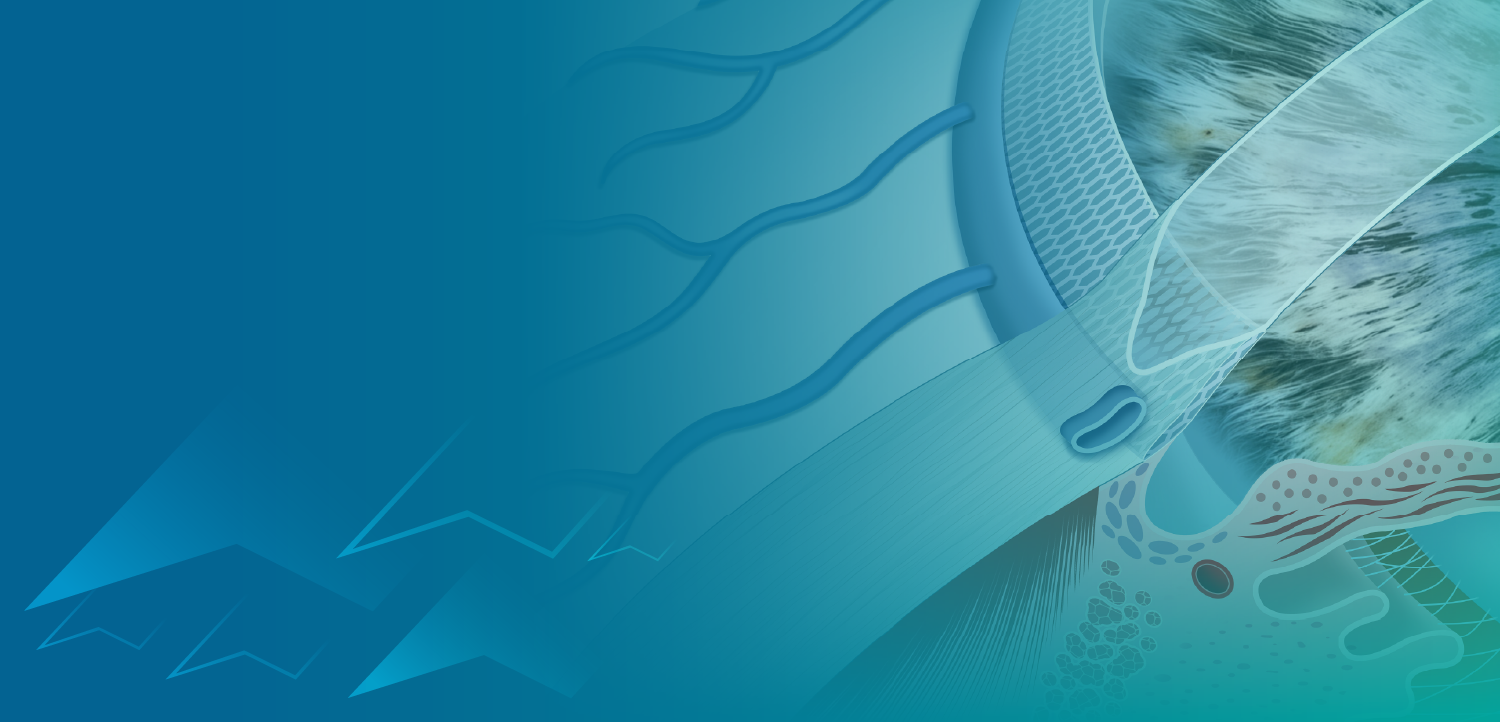











































.png)


